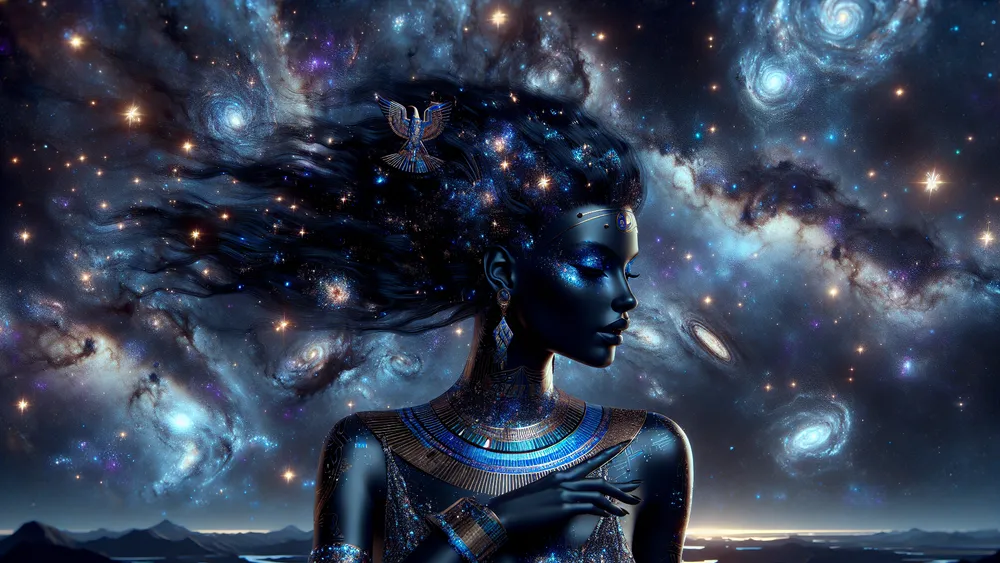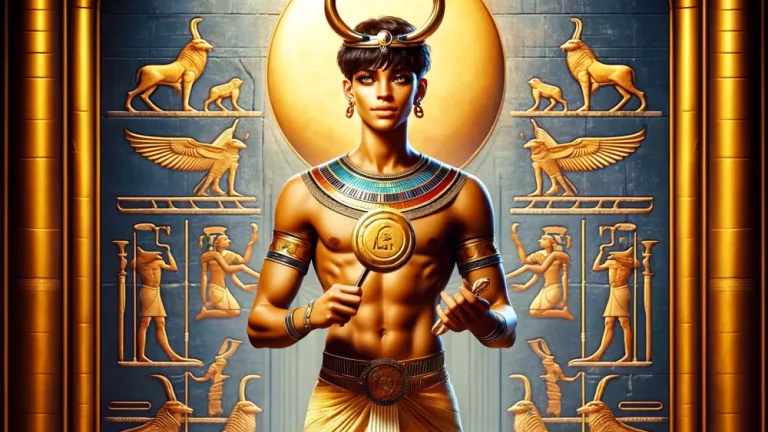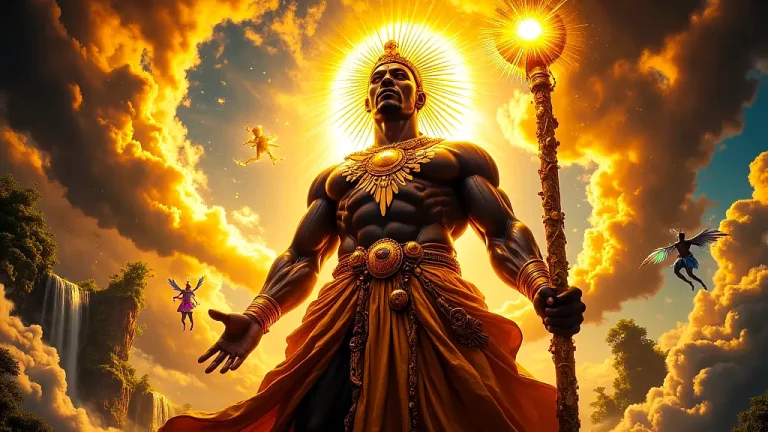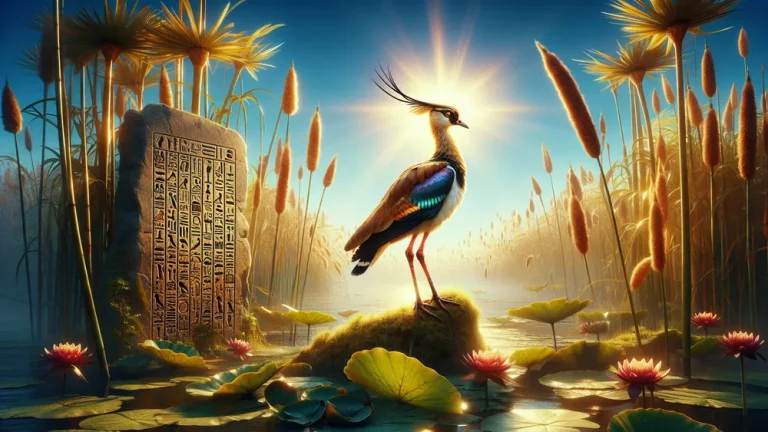Nut: Egyptian Goddess Of The Sky And Stars
In ancient Egyptian mythology, Nut is a big deal. She’s the goddess of the sky and stars. Her story? It’s all mixed up with creation myths and religious stuff in ancient Egypt. So, if you want to get what their cosmology and spirituality are about, you gotta know about Nut.
Key Points:
- Nut is the Egyptian goddess of the sky and stars.
- She is a central figure in ancient Egyptian mythology, symbolizing the night sky and the cycle of night and day.
- Nut is the daughter of Shu and Tefnut, and the sister and consort of Geb.
- She plays a crucial role in the creation story by separating the sky from the earth.
- Nut is the mother of prominent Egyptian gods such as Osiris, Isis, Set, and Nephthys.
- In ancient Egyptian religion, Nut is worshipped for her protection of the dead and her role in maintaining balance between night and day.
- Nut’s influence can be seen in modern culture through literature, art, and spiritual practices.
This blog post dives into where she comes from, her family ties, what she symbolizes, and how people worshipped her. We want to show you all the cool things about Nut and why she still matters today. By looking at all these details, we hope to shine a light on Nut’s many sides and her lasting impact.
Nut: The Egyptian Goddess of the Sky and Stars
To get why Nut is so important in ancient Egyptian mythology, we need to look at her origins, her family ties, her symbols, and how people worshipped her. So, let’s dive into these areas and really understand this amazing sky goddess.
Origins and Mythology of Nut
Nut, the Egyptian goddess of the sky and stars, has her story deeply rooted in ancient Egyptian mythology. She’s often shown as a woman arching over the earth, symbolizing the sky. Nut is one of the oldest deities in their pantheon. In the creation story, she’s super important.
She’s the daughter of Shu (the god of air) and Tefnut (the goddess of moisture), and she’s also the sister and consort of Geb, the earth god. They were so in love that they couldn’t be separated, which led to their dad Shu having to force them apart to make space for the world. This separation shows the sky being held above the earth.
Nut is central to many myths and legends. One story says she swallows the sun god Ra every night and gives birth to him every morning, showing night and day cycles. Plus, she’s the mom of some big-time gods: Osiris, Isis, Set, and Nephthys.

- Nut’s depiction: Often shown as a star-covered woman arching over the earth.
- Role in creation story: Daughter of Shu and Tefnut; separated from Geb by Shu.
- Mythological significance: Swallows and births Ra daily; mother to Osiris, Isis, Set, and Nephthys.
- Symbolism: Represents the night sky and the cycle of night and day.
Nut, an Egyptian goddess, plays a crucial role in ancient Egyptian mythology as the sky deity and mother of major gods, symbolizing the sky and night and day cycles while being intricately linked to the creation story.
Nut’s Family and Relationships
Nut’s family tree is pretty interesting. Her parents are Shu (the god of air) and Tefnut (the goddess of moisture). She has a brother, Geb (the earth god), who is also her consort. Their bond is so strong that their dad, Shu, had to separate them to make room for the world. This act symbolizes the split between the sky and the earth. Nut’s kids are some of the most important gods in Egyptian mythology.
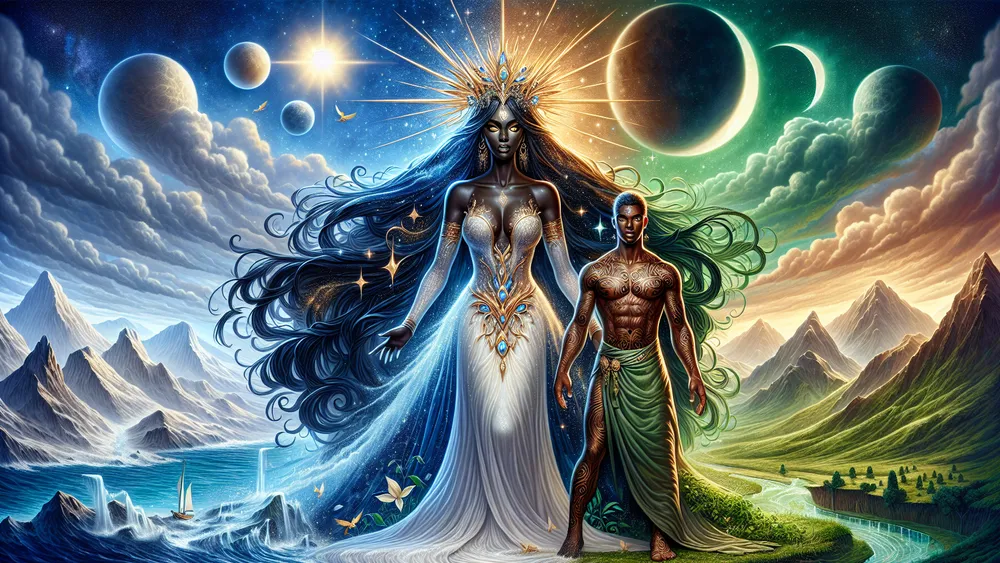
There’s Osiris (god of the afterlife), Isis (goddess of magic and motherhood), Set (god of chaos and storms), and Nephthys (goddess of mourning and protection). Each one of them plays a big role in various myths and religious practices, showing how important Nut is as a mother figure in the pantheon.
| Family Member | Role/Significance |
|---|---|
| Shu | God of air; Nut’s father |
| Tefnut | Goddess of moisture; Nut’s mother |
| Geb | Earth god; Nut’s brother and consort |
| Osiris | God of the afterlife; Nut’s son |
| Isis | Goddess of magic and motherhood; Nut’s daughter |
| Set | God of chaos and storms; Nut’s son |
| Nephthys | Goddess of mourning and protection; Nut’s daughter |
Nut’s family tree includes prominent Egyptian gods and goddesses, with her children playing crucial roles in mythology and religious beliefs.
Symbolism and Iconography of Nut
Nut’s got a bunch of symbols tied to her, like the sky, stars, and night. You often see her in ancient Egyptian art as a woman arching over the earth. Her body is covered in stars, which shows she’s the night sky. This image means she’s the sky and everything up there.
Nut’s also shown swallowing the sun at night and giving birth to it in the morning. This shows night turning into day. Her stretched-out body acts like a protective cover over the earth, showing she’s a guardian of the heavens. The stars on her body aren’t just for looks; they stand for all the souls she protects and guides after death.
Sometimes, Nut has a water pot on her head, which links her to the Nile and the life it brings.

- Sky and Stars: Show her domain and control over night.
- Arching Woman: Means she’s all-encompassing and protective.
- Swallowing and Birthing the Sun: Shows night turning into day.
- Water Pot: Links her to the Nile and nourishment.
Nut in Ancient Egyptian Religion
Nut’s got a big part in the daily religious life of ancient Egyptians. They see her as the goddess who protects the dead and helps them get to the afterlife safely. People believe her body makes up the sky, and every night she swallows the sun, only to give birth to it again each morning. This idea is super important to how they understand the world.
So, they often give offerings and prayers to the night sky, hoping for her protection and favor. There are temples for Nut, like in Dendera and Thebes, where you can see detailed pictures of her with stars all over. These places are where priests do rituals to honor her, making sure night and day stay balanced and that the dead are taken care of.

- Dendera Temple Complex: Has detailed pictures of Nut on its ceilings.
- Theban Necropolis: Tombs here show Nut’s images, showing her protective role.
- Daily Offerings: Food, drink, and incense are given to gain her favor.
- Funerary Texts: Often call on Nut to protect the dead on their journey.
Nut’s Influence on Modern Culture
Nut, the Egyptian goddess of the sky and stars, pops up in modern culture in all sorts of ways. You see her in books like “The Kane Chronicles” by Rick Riordan, where ancient Egyptian gods are a big deal. Artists today love to use Nut’s starry imagery, making art that shows her as a night sky figure covered in stars. And then there’s popular culture.

Video games like “Assassin’s Creed Origins” dive into Egyptian mythology and feature Nut too. Plus, she’s got a special place in modern spiritual practices. Neo-pagan and reconstructionist groups often bring her symbols and stories into their rituals, seeing her as a cosmic mother and protector.
- “The Kane Chronicles” by Rick Riordan: Features Nut as part of its mythological narrative.
- “Assassin’s Creed Origins”: Includes references to Nut and other Egyptian deities.
- Contemporary Art: Artists create celestial-themed works inspired by Nut.
- Neo-Pagan Practices: Incorporate Nut’s symbols and myths into rituals.
Nut, the Egyptian goddess of the sky and stars, appears in various forms in modern culture, from books and video games to contemporary art and spiritual practices.
Pantheon of All Egyptian Mythology Gods
The Egyptian pantheon? It’s huge! There are so many gods and goddesses, each with their own special roles and stories. If you want to dive into all of them, check out this list of all the Egyptian gods. It’s got everything you need to know about the major figures, their tales, and why they matter in ancient Egyptian culture.
FAQs
1. Who were Nut’s parents in Egyptian mythology?
Nut’s parents? Well, they are the air god Shu and the moisture goddess Tefnut.
2. What are the main symbols associated with Nut?
So, the main symbols you see with Nut? The sky, stars, and the night.
3. How is Nut depicted in ancient Egyptian art?
Nut, well, she appears in ancient Egyptian art as this woman who arches over the earth. You often see her with stars all over. Sometimes, she’s shown swallowing the sun at night and then giving birth to it in the morning.
4. What role did Nut play in the creation story?
So, in the creation story, Nut is the sky goddess. She gets separated from her consort Geb, who is the earth god. Shu, the god of air, does this.

